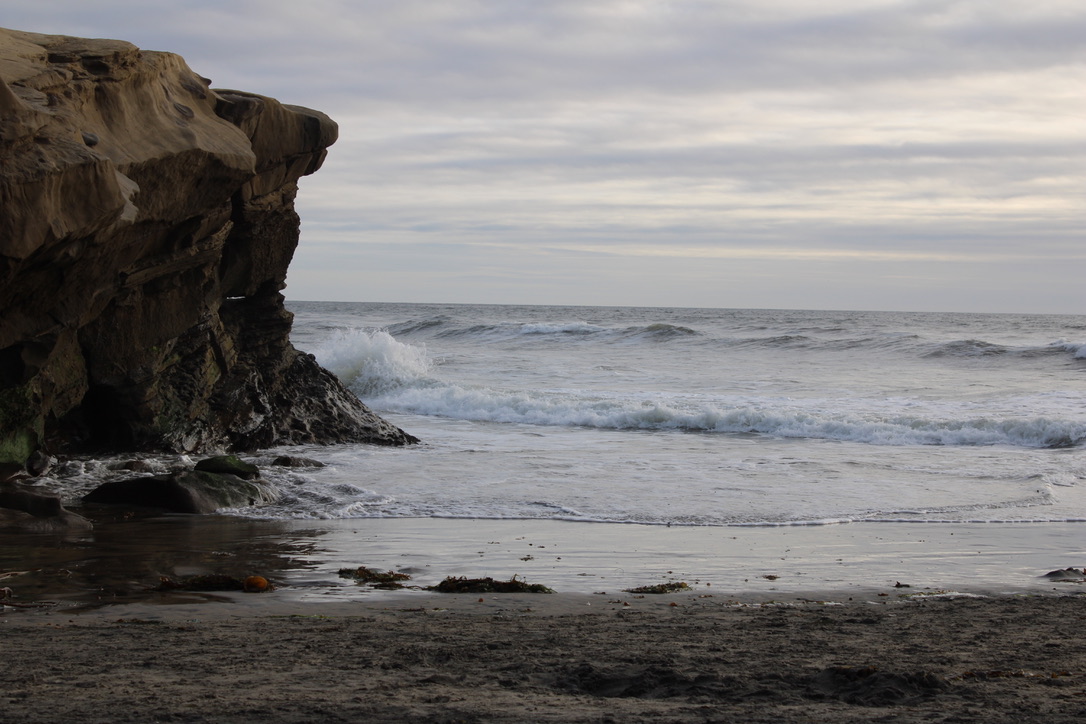
Liz Habib
Waves crash on the shore at Ocean Beach
Bioluminescent waves are back at San Diego beaches and are truly a striking display of nature. However, the glowing blue spectacle is a cause for alarm and is a clear warning sign for disruption of both land and sea life, according to The National Oceanic and Atmospheric Administration (NOAA).
Bioluminescence is the ability of an organism to produce light, and is quite common in oceanic life with an estimated 80% of deep water animals possessing the ability to produce this glowing chemical reaction, according to The NOAA. This quality is present in a lot of marine life, ranging from large fish to microscopic algae. These glowing blue waves are caused by an abundance of bioluminescent algae being pushed to the shore.
Though bioluminescent life on land exists, such as in fireflies, it is extremely rare in terrestrial life in comparison to marine life.
As Nina Shmorhun, Oceanography Discipline Lead Professor at Palomar College describes, “Our deep ocean is a light show!” However, most bioluminescent life lives in deep water, raising large concerns as to why this glistening phenomena has recently appeared on the San Diego shoreline.
Many people believe bioluminescent waves, which glow a bright blue in darkness, have no color during the day but this is untrue. During the day, these glow-in-the-dark algae actually appear a dark red which is why the waves are known as red tides.
Red tides are invasive and harmful and are quite literally also known as harmful algal blooms. Harmful algal blooms are detrimental for many reasons, with some types even producing “an extremely harmful neurotoxin, which has been linked to shellfish and marine mammal poisoning events in California,” Shmorhun said.
When these blooms die off, they produce hydrogen sulfide, releasing a rotten-egg-like odor that sweeps our coastal cities. They reduce the amount of oxygen in the water, causing fish and other marine creatures to die off which adds to the stench endured by beach city dwellers.
“The greater the concentration of algae, the stronger the odor will be,” Shmorhun said.
Due to the invasive nature of harmful algal blooms, they’re able to thrive in warm, acidic waters, giving them the ability to outcompete the good, native algae. Native algae are part of a much larger ecosystem and their decomposition can become disastrous for the entire planet if a trophic cascade – a deadly chain reaction– occurs. Essentially, the death of native algae will lead to deaths of other organisms.
Warming ocean waters and increased acidity levels are both catalysts for the growth of these harmful algal blooms on the shoreline. The warming of our oceans and increased acidity levels is caused by global warming primarily from burning fossil fuels such as coal, oil and gas. If not addressed, global warming will prove to be incredibly calamitous and destructive for our planet, ocean and “marine organisms that cannot adapt to a sudden change in the conditions of their environment,” according to Shmorhun.
Bioluminescence is a clear warning sign we are killing the environment and earth’s ecosystems. Similar warning signs were revealed years ago, such as coral bleaching which is also primarily caused by rising ocean temperatures, acidification, pollution and other harm due to unethical human interference.
An example of this is overfishing, which depletes the ocean’s biodiversity. A whopping 33% of fish stocks are overfished, according to the United Nations Food and Agriculture Organization.
There are many ways to combat this, such as reducing the collective burning of fossil fuels, using renewable energy and implementing strict regulations on plastic production and disposal. Individuals can help by sourcing food from ethical sources, using sustainable transportation such as walking, cycling, electric vehicles and public transportation. Other helpful actions include making a conscious effort to live ethically and utilizing sustainable replacements for everyday products like chemical-free sunscreen.
While bioluminescent waves serve as a warning sign, it’s not too late. Living sustainably and making conscious efforts to improve our environment could help our collective ecosystems maintain their health and safety.